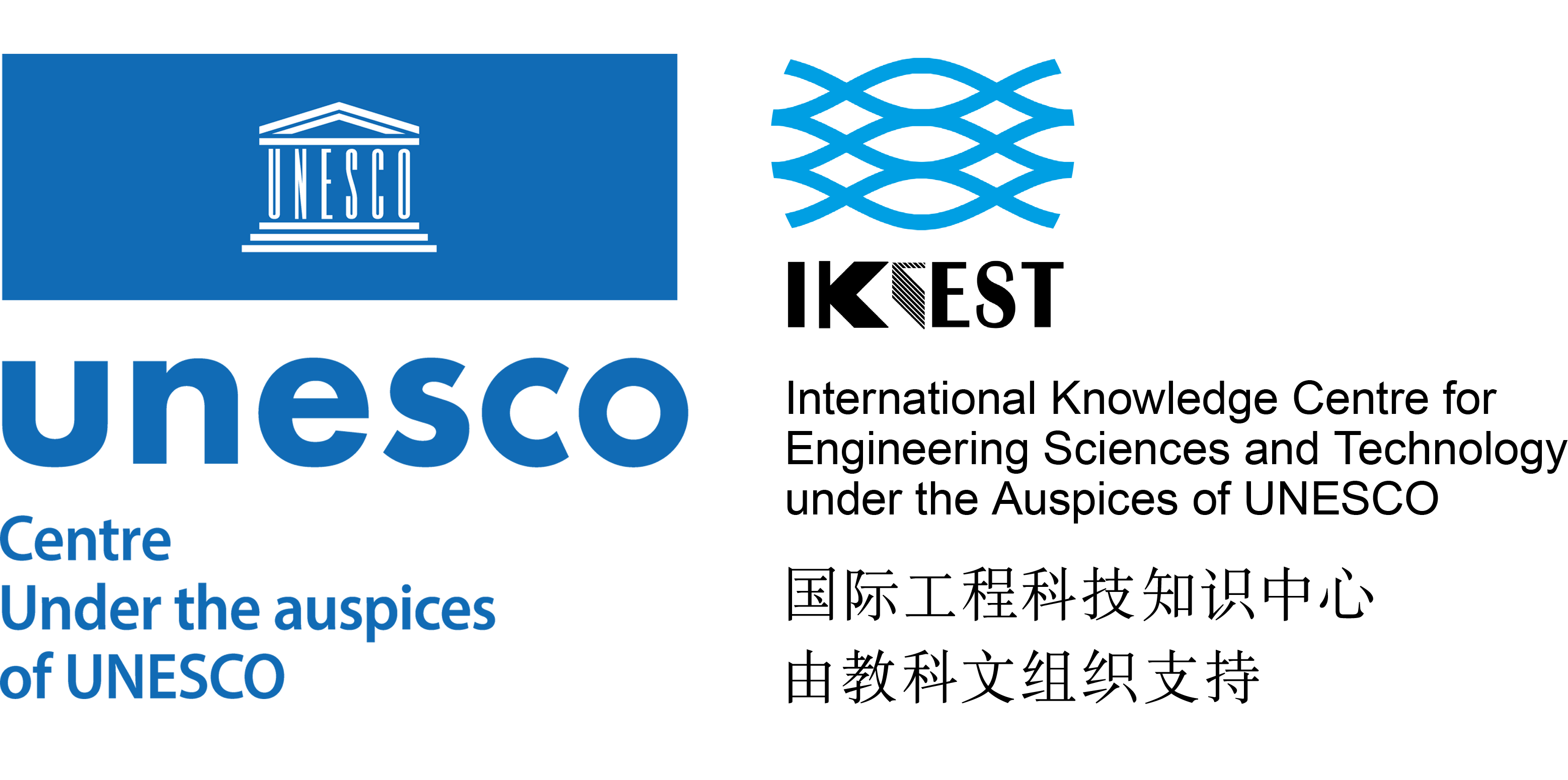Journal


IEEE Transactions on Network Science and Engineering
Archives Papers: 441
IEEE Xplore
Please choose volume & issue:
-
A Blockchain-Based Self-Tallying Voting Protocol With Maximum Voter Privacy
Keywords:BlockchainsElectronic votingPrivacyProposalsTechnological innovationSmart contractsPublic keyblockchainscryptographic protocolsdata protectiongovernment data processingmaximum voter privacysecure voting mechanismreliable voting mechanismsecure voting systemreliable voting systemexisting blockchain-based proposalsweak fault-tolerant mechanismsinadequate privacy protectionblockchain-based self-tallying voting protocolhigh available votinganonymous votingabstention problemself-tallying voting systemssecurityrobustnessE-votingzero-knowledge proofhomomorphic encryptionblockchaincryptographyAbstracts:The development of secure and reliable voting mechanism has attracted more and more attention from academia and industry. Many researchers are trying to design a secure and reliable voting system. However, many existing blockchain-based proposals have more or less problems, such as limited number of participants, weak fault-tolerant mechanisms and inadequate privacy protection, which makes it difficult to apply them to the real world to solve the above problems. Therefore, in this paper, we proposed a blockchain-based self-tallying voting protocol to achieve high available, secure and anonymous voting. More specifically, we adopt threshold secret sharing to deal with abstention problem (this is a difficult problem to solve in self-tallying voting systems). We adopt homomorphic encryption and zero-knowledge proof to achieve anonymity and verifiability of encrypted data. Through the analysis and performance testing, and comparison with existing similar proposals, the results show that our scheme has advantages in security and robustness, and the performance test shows that our scheme has good practicability and scalability.
-
EV-PUF: Lightweight Security Protocol for Dynamic Charging System of Electric Vehicles Using Physical Unclonable Functions
Keywords:ProtocolsVehicle dynamicsAuthenticationElectric vehiclesPrivacyMathematical modelsCharging stationsautomotive electric vehiclesdata privacyprotocolstelecommunication securitydynamic charging systemEV-PUF suiteultra-lightweight authenticationphysical unclonabilitysession key agreementmutual authenticationlightweight authentication protocol suitesecurityauthentication protocolsdynamic charging system entitiesphysical unclonable functionselectric vehiclelightweight security protocolAuthentication protocoldynamic chargingelectric vehiclesrandom oracle modelsecuritytamarin toolAbstracts:Dynamic charging is a potential technology that would enable electric vehicles to be charged while they are in motion. Significant security and privacy concerns, on the other hand, arise as a result of communications between electric vehicles and a variety of dynamic charging system entities occurring over a public channel. Numerous authentication protocols have been presented recently to address security concerns associated with dynamic charging system. Nonetheless, we provide a lightweight authentication protocol suite that enables mutual authentication and session key agreement between the electric vehicle and the charging system while safeguarding against numerous attacks. The EV-PUF is based on physical unclonability, which is gaining popularity as a substitute for ultra-lightweight authentication and resistance to machine learning based attacks. Additionally, the security of the EV-PUF suite has been demonstrated using the random oracle model and state-of-the-art tool, Tamarin. According to the performance analysis, it is apparent that the EV-PUF suite improves efficiency in terms of consumption of less communication and computing overhead.
-
Effect of Disinformation Propagation on Opinion Dynamics: A Game Theoretic Approach
Keywords:Information integrityGamesUncertaintySocial networking (online)Mathematical modelsFake newsAdaptation modelscomputer crimegame theoryinference mechanismsinformation analysissocial networking (online)uncertainty handlingdisinformation propagationopinion dynamicsgame theoryonline social networksOSNdynamic social interactionssubjective logicopinion uncertainty handlingattacker deception strategiesuser opinion update modelsNash Equilibrium strategiesDisinformationgame theorysubjective opinionuncertaintyopinion dynamicspolarizationAbstracts:Disinformation can alter or manipulate our values, opinions, and rational decisions toward any life event because disinformation, such as fake news or rumors, is propagated rapidly and broadly in online social networks (OSNs). Game-theoretic models can help people maximize the benefits from dynamic social interactions. This work presents an opinion framework formulated by repeated, incomplete information games that model OSN users’ subjective opinions. The users may update their opinions using various criteria, such as uncertainty, homophily, encounter, herding, or assertion. We demonstrate how Subjective Logic, a belief model explicitly handling opinion uncertainty, can be employed to model attackers’ deception strategies, users’ opinion update models, and the influences of propagating disinformation through the interactions between users. Through extensive experiments, we investigated how an individual user's information processing type can introduce different impacts on the extent of disinformation propagation. We compared the performance of the five different opinion update models under OSNs characterized by two real OSN datasets. We analyzed their impact on the choices of best strategies, their utilities, and network/opinion polarization. We also examined how the player's choices of best strategies under uncertainty are different from Nash Equilibrium strategies based on correct beliefs towards their opponents’ moves.
-
Deep Multi-Attributed-View Graph Representation Learning
Keywords:Representation learningTrainingPeriodic structuresSocial networking (online)Deep learningPredictive modelsLoss measurementgraph theorylearning (artificial intelligence)social networking (online)MagCAEmultiattributed viewsdeep Multiattributed-view graph representationlower-dimensional feature spacedeep learning modelsgraph structurecomplex relational datadeep attributed graph representation modelsgraph attributesmultiple attributed viewsdistinct attributed viewsdeep unsupervised graph representation learning modelcalled Multiattributed-view graph Convolutional AutoEncoderAttributed graphautoencodergraph convolutional networksgraph representation learningmulti-attributed viewsocial networksAbstracts:Graph representation learning aims at mapping a graph into a lower-dimensional feature space. Deep attributed graph representation, utilizing deep learning models on the graph structure and attributes, shows its significance in mining complex relational data. Most existing deep attributed graph representation models assume graph attributes in a single-attributed view. However, rich information in real-world applications demands the ability to handle multiple attributed views. For example, in social network users’ profiles and posts represent two distinct attributed views. A single-attributed view or a simple ensemble of them fails to represent the rich information and complex relations therein. To confront this challenge, this paper proposes a novel deep unsupervised graph representation learning model, called Multi-attributed-view graph Convolutional AutoEncoder (MagCAE). MagCAE learns the node-pairwise proximity among multi-attributed views and node embeddings, across which a novel loss function is designed to preserve the node-pairwise likelihood. An aggregation layer is specially developed in MagCAE to optimize the weights of embeddings on multi-attributed views. The extensive experiments on four datasets demonstrate the superiority of MagCAE over twelve baselines.
-
Incentive Framework for Cross-Device Federated Learning and Analytics With Multiple Tasks Based on a Multi-Leader-Follower Game
Keywords:Task analysisCollaborative workGamesOptimizationData modelsAnalytical modelsResource managementdistributed processinggame theorylearning (artificial intelligence)mobile computingradio networksresource allocationmultileader-follower gamedecentralized datadata ownermultitask systemdifferent local tasksfederated optimizationincentive frameworktask ownercross-device federated learningFederated optimizationincentive mechanismresource allocationmulti-leader-follower gameAbstracts:Federated learning and analytics are proposed to collaboratively learn models or statistics from decentralized data. However, the accuracy of global models relies heavily on the participation of data owners. Furthermore, for a multi-task system, data owners need to allocate limited computation resources efficiently among different local tasks. In this paper, based on the federated optimization, we use a multi-leader-follower game to build an incentive framework for the federated learning and analytics system with multiple tasks. In the proposed framework, each task owner at the upper layer decides its reward rate to incentivize data owners to participate in the federated learning or analytics. Then, based on the reward rates of tasks, each data owner (e.g., mobile device or organization) at the lower layer determines its accuracy level of local tasks' solutions. We analyze the optimal computation strategies of data owners. Because the closed-form expression of the lower-layer solution cannot be obtained, we leverage the variational inequality (VI) theory to analyze the existence of the proposed game's solution. Moreover, we provide a block coordinate descent (BCD) algorithm to solve the proposed game. Simulation results show that our proposed framework can achieve the performance improvement of the whole system.
-
Pareto: Fair Congestion Control With Online Reinforcement Learning
Keywords:TrainingReinforcement learningMagnetosphereIon radiation effectsThroughputHeuristic algorithmsReceiverscomputer networksmulti-agent systemsPareto optimisationreinforcement learningtelecommunication congestion controlinter-flow fairnesscongestion control algorithmmultiagent reinforcement learning frameworknetwork linkfair congestion controlonline reinforcement learningmodern-day computer networksfair network congestion control algorithmsadaptive network congestion control algorithmsdeep reinforcement learning agentsmultiple diverse networkstime-varying real-world networking environmentsCongestion controldeep reinforcement learningfairnessonline learningAbstracts:Modern-day computer networks are highly diverse and dynamic, calling for fair and adaptive network congestion control algorithms with the objective of achieving the best possible throughput, latency, and inter-flow fairness. Yet, prevailing congestion control algorithms, such as hand-tuned heuristics or those fueled by deep reinforcement learning agents, may struggle to perform well on multiple diverse networks. Besides, many algorithms are unable to adapt to time-varying real-world networking environments; and some algorithms mistakenly overlooked the need of explicitly taking inter-flow fairness into account, and just measured it as an afterthought. In this paper, we propose a new staged training process to train <italic>Pareto</italic>, a new congestion control algorithm that generalizes well to a wide variety of environments. Different from existing congestion control algorithms running reinforcement learning agents, Pareto is trained for fairness using the first multi-agent reinforcement learning framework that is communication-free. Pareto continues training online adapting to newly observed environments in the real-world. Our extensive array of experiments shows that Pareto (i) performs well in a wide variety of environments, (ii) offers the best fairness when it comes to competing with other flows sharing the same network link, and (iii) improves its performance with online learning to surpass the state-of-the-art.
-
CDMR: Effective Computing-Dependent Multi-Path Routing Strategies in Satellite and Terrestrial Integrated Networks
Keywords:SatellitesRoutingTask analysisEnergy consumptionComputational modelingHeuristic algorithmsNetwork topologyoptimisationrouting protocolssatellite communicationtelecommunication network topologySTINterrestrial network coveragerobust end-to-end transmissioncommunication scenariostask transmissionenergy consumptionhigh dynamic satellite networkmultipath routeoptimal CDMR strategycomputing modelseffective computing-dependent multipath routing strategiessatellite terrestrial integrated networkSTINend-to-end transmissionmulti-path routingCDMRenergy consumptionAbstracts:With the development of science and technology, Satellite and Terrestrial Integrated Network (STIN) can effectively make up for the defects in the terrestrial network coverage and provide robust end-to-end transmission and computing supports for users in many communication scenarios such as emergency rescue, space exploration, and so on. However, many researchers only studied transmission or computing, ignoring that the task can be computed in task transmission. And limited by the satellite's battery resources and high dynamics, it is challenging to realize the fusion of communication and computing with the constraint of energy consumption in the high dynamic satellite network. Therefore, this paper proposes a Computing-Dependent Multi-path Routing (CDMR) paradigm to address such a challenge. In CDMR, the task is mapped to the multi-path route in STIN, and the energy consumption is taken as the optimization goal. Furthermore, the processing latency is the constraint to ensure that the optimal CDMR strategy is under latency constraint. Finally, the simulation results show that the CDMR proposed in this paper can effectively compute the task during the end-to-end transmission. Compared with other computing models, CDMR has more evident advantages in energy saving.
-
Event-Triggered Optimal Attitude Consensus of Multiple Rigid Body Networks With Unknown Dynamics
Keywords:Reinforcement learningNeural networksMathematical modelsAttitude controlSystem dynamicsManipulator dynamicsCostsattitude controlclosed loop systemscontrol engineering computingcontrol system synthesisfunction approximationmulti-agent systemsneural netsoptimal controlreinforcement learningRL methodneural networkoptimal value function approximationmultiple rigid body networkevent-triggered optimal attitude consensusevent-triggered reinforcement learningconsensus errorattitude dynamicsBellman optimality principleoptimal controllerHamilton-Jacobi-Bellman equationssystem dynamicsHJB equationsself-triggered mechanismuniformly ultimately boundedUUBclosed-loop systemOptimal attitude consensusmultiple rigid body networksevent-triggered controlreinforcement learningAbstracts:In this paper, an event-triggered Reinforcement Learning (RL) method is proposed for the optimal attitude consensus of multiple rigid body networks with unknown dynamics. Firstly, the consensus error is constructed through the attitude dynamics. According to the Bellman optimality principle, the implicit form of the optimal controller and the corresponding Hamilton-Jacobi-Bellman (HJB) equations are obtained. Because of the augmented system, the optimal controller can be obtained directly without relying on the system dynamics. Secondly, the self-triggered mechanism is applied to reduce the computing and communication burden when updating the controller. In order to address the problem that the HJB equations are difficult to solve analytically, an RL method which only requires measurement data at the event-triggered instants is proposed. For each agent, only one neural network is designed to approximate the optimal value function. Each neural network is updated only at the event-triggered instants. Meanwhile, the Uniformly Ultimately Bounded (UUB) of the closed-loop system is obtained, and Zeno behavior is also avoided. Finally, the simulation results on a multiple rigid body network demonstrate the validity of the proposed method.
-
A Distributed Network System for Nonsmooth Coupled-Constrained Optimization
Keywords:OptimizationLinear programmingOutput feedbackConsensus protocolNetwork systemsEigenvalues and eigenfunctionsConvex functionsconvergenceconvex programmingdistributed algorithmsfeedbackmulti-agent systemsvectorsconvex local objective functionslocal set constraintsheterogeneous coupled constraintsconsensus protocoloutput feedbackconnected communication networksdistributed nonsmooth optimizationnonsmooth coupled-constrained optimizationLagrangian multipliersdistributed multiagent network systemoutput vectorConsensus protocolcoupled constraintdifferential inclusionsdistributed convex optimizationmulti-agent networkAbstracts:This paper addresses a class of distributed nonsmooth optimization problems whose objective function is a sum of convex local objective functions subjected to local set constraints and heterogeneous coupled constraints, including inequality and equality ones. To settle the problem, based on the consensus protocol for the Lagrangian multipliers of coupled constraints, we propose a distributed multi-agent network system with projected output feedback, which is different from the common projected primal-dual subgradient flow. It is proved that the output vector of the system is convergent to the optimal solution of the optimization problem from any initial state over connected communication networks. Finally, the effectiveness of the system is illustrated via two numerical examples.
-
Multi-Constrained Embedding for Accurate Community Detection on Undirected Networks
Keywords:Symmetric matricesSymbolsMatrix decompositionContext modelingTask analysisPeriodic structuresElectronic mailconvex programmingmatrix decompositionundirected network embedding modelweighted networksunweighted networksreal-world networksaccurate community detectionsymmetric nonnegative matrix factorizationlatent factor matrixnonnegativity-constrained embeddingAMSNEAlternating Direction Method of MultipliersADMMCommunity detectionnetwork embeddingnon-negative matrix factorizationnon-negative model and alternating direction method of multipliersAbstracts:A Symmetric Non-negative Matrix Factorization (SNMF)-based network embedding model adopts a unique Latent Factor (LF) matrix for describing the symmetry of an undirected network, which reduces its representation ability to the target network and thus resulting in accuracy loss when performing community detection. To address this issue, this paper proposes a new undirected network embedding model, i.e., Alternating Direction Method of Multipliers (<underline>A</underline>DMM)-based, <underline>M</underline>odularity, <underline>S</underline>ymmetry and <underline>N</underline>onnegativity-constrained <underline>E</underline>mbedding (AMSNE), which can be applicable to undirected, weighted or unweighted networks. It relies on two-fold ideas: a) Introducing the symmetry constraints into the model to correctly describe the symmetric of an undirected network without accuracy loss; and b) Adopting the ADMM principle to efficiently solve its constrained objective. Extensive experiments on eight real-world networks strongly evidence that the proposed AMSNE outperform several state-of-the-art models, making it suitable for real applications.
Hot Journals
- Risk Breakdown Matrix for Risk-Based Inspection of Transportation Infrastructure Projects
- Social Control in Outsourced Architectural and Engineering Design Consulting Projects: Behavioral Consequences and Motivational Mechanism
- 2022 Best Paper Award
- Hold-Ups and Failures in Negotiated Order: Unearthing the Nuances of Rework Causation in Construction
- Prevalence and Risk Factors for Poor Mental Health and Suicidal Ideation in the Nigerian Construction Industry
- CFRP–Cable-Stayed Bridge Hybrid with Partial Suspension and a Span Exceeding 3,000 m: Concept, Optimization, and Construction
- Impact of Wind Load Characteristics on Computed Bridge Stay-Cable Forces Used for Bridge Health Monitoring
- Weak-End and Frequency Detection of Elastically Supported Bridges by Contact Residual Response of Two-Axle Test Vehicle in a Round Trip
- Development of Performance-Based Fragility Curves of Coastal Bridges Subjected to Extreme Wave-Induced Loads
- An Analytical Model to Evaluate Short- and Long-Term Performances of Post-Tensioned Concrete Box-Girder Bridges Rehabilitated by an Ultrahigh-Performance Concrete Overlay
- Three-Dimensional Velocity Distribution in Straight Smooth Channels Modeled by Modified Log-Law
- Experimental Investigation on Flow Past Two and Three Side-by-Side Inclined Cylinders
- An Experimental Investigation of Rotor–Box Aerodynamic Interaction 1
- Modeling Gas–Liquid Flow Between Rotating and Nonrotating Annular Disks
- Entry Length Requirements for Two- and Three-Dimensional Laminar Couette–Poiseuille Flows
Advanced Materials (3,745)
- Structured Perovskite Light Absorbers for Efficient and Stable Photovoltaics
- Strategies for High‐Performance Solid‐State Triplet–Triplet‐Annihilation‐Based Photon Upconversion
- Atomic Engineering Catalyzed MnO2 Electrolysis Kinetics for a Hybrid Aqueous Battery with High Power and Energy Density
- Crystal Adaptronics: Global Performance Indices for Dynamic Crystals as Organic Thermal Actuators (Adv. Mater. 20/2020)
- Enlightening Materials with Photoswitches
Acta Astronautica (1,768)
- Mixed-integer trajectory optimization with no-fly zone constraints for a hypersonic vehicle
- Adaptive control design for active Pogo suppression of large strap-on liquid launch vehicles
- Machine learning based approach for modeling and forecasting of GPS–TEC during diverse solar phase periods
- Effect of two-dimensional micro-cavity surface on hypersonic boundary layer
- Investigation on burning behaviors of aluminum agglomerates in solid rocket motor with detailed combustion model








 User Center
User Center My Training Class
My Training Class Feedback
Feedback




